Wondering how much hairless cats might cost? These unique, furless felines have captured the attention and affection of cat lovers around the world. With their distinct appearance and charming personalities, it’s no surprise that people are curious about the price of these extraordinary pets.
Let’s delve into the world of hairless cats, exploring the costs associated with owning one and what factors influence their price.
Join us on this fascinating journey to better understand these remarkable feline companions and the potential investment needed to welcome one into your home.
History of the Hairless Breeds

Have you ever wondered about the origin of hairless cats? These unique felines are not only fascinating to look at, but they also have an exciting history. The Sphynx cat, in particular, is the most common and possibly the earliest breed of hairless cat.
It all began in 1966 when a hairless kitten named Prune was born to a domestic shorthair in Toronto, Canada. To develop the Sphynx breed, also known as the Canadian Hairless, Prune was backcrossed with his mother and bred with a few other hairless cats found later. In the 1970s, two hairless female cats, Dermis and Epidermis, born to stray barn cats in Minnesota, were sold to a breeder in Oregon and added to the Sphynx breeding program.
The gene responsible for hairlessness was autosomal recessive, and it was eventually isolated in the keratin 71 gene. This mutation causes the hair follicles to collapse, preventing the development of the hair shaft.
For a while, the gene pool remained quite limited. That changed when a breeder named Shirley Smith found three hairless kittens in her neighborhood and used them to crossbreed with a European breed called Devon Rex.
Other Breeds of Hairless Cats
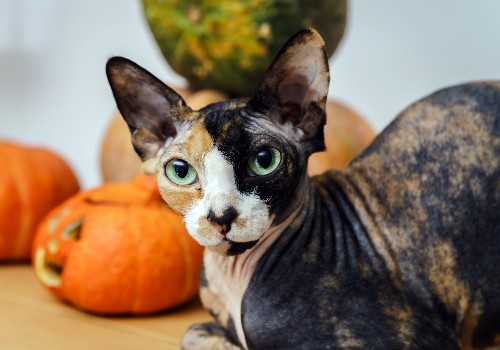
Did you know that there are more than just three hairless cat breeds? In addition to the original Sphynx, Peterbald, and Donskoy, five other unique hairless breeds have emerged. Let’s explore these fascinating feline varieties.
The Bambino is a cross between the Sphynx and Munchkin cats. While the Sphynx contributes to hairlessness, the Munchkin, a breed resulting from a genetic mutation, gives them their distinctively short legs. Not only are Bambinos hairless and short-legged but they are also known to be incredibly affectionate lap cats.
Next is the Dwelf, bred from three cat lines: the Sphynx, Munchkin, and American Curl. This breed inherits hairlessness from the Sphynx, short legs from the Munchkin, and unique curling of the ears from the American Curl. Dwelfs are friendly and intelligent and form strong attachments to their humans, often following them around as a dog would.
The Ukrainian Levkoy is a cross between the Donskoy and Scottish Fold, the latter being known for its inward folding ears. This combination results in hairless kittens with distinctive ear folds. Ukrainian Levkoys are relatively relaxed cats that enjoy the company of humans.
Minskins are another fascinating breed, resulting from the crossbreeding of Sphynx and Munchkin cats. These cats have short legs and sport short, downy fur patches on their faces, ears, and extremities. Although not entirely hairless, their sparse fur and unique appearance have drawn comparisons to the fictional character, E.T.
Finally, the Lykoi is a breed that was not intentionally created through a breeding program. Instead, this breed emerged from a spontaneous mutation in domestic shorthair cats. Lykois has a striking appearance, resembling werewolves with their sparse hair, black, leathery skin, and webbed feet. These cats are energetic, friendly, affectionate, and exceptionally intelligent.
The world of hairless cat breeds extends far beyond the well-known Sphynx, Peterbald, and Donskoy. The Bambino, Dwelf, Ukrainian Levkoy, Minskin, and Lykoi each offer unique characteristics and traits, making them excellent companions for those who appreciate their distinctive appearances and personalities.
Personality Traits of Hairless Cats
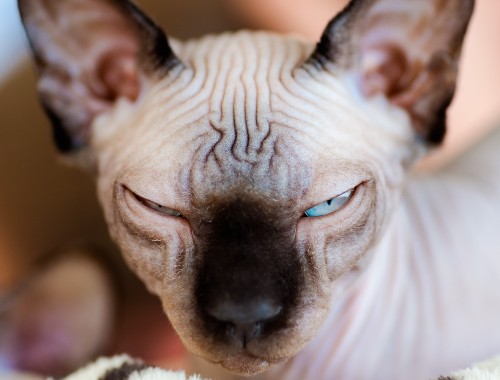
Are you considering a hairless cat as your new feline companion? These unique, affectionate, and intelligent creatures come in different breeds, each with their own unique traits. Let’s dive into the personalities of some popular hairless cat breeds.
The Sphynx is known for its intelligence and playfulness. This breed craves attention and will follow you around like a loyal dog. They’re great with children and other pets, and their ideal day consists of playing all day and cuddling all night. Who wouldn’t want a sweetheart like that?
Peterbald cats are vocal, affectionate, and playful creatures who love to share their opinions on everything. They bond well with other pets, especially dogs, and enthusiastically greet new people. However, don’t expect them to guard your home; they’re more likely to welcome a burglar as warmly as they do your sister. A Peterbald will be a friend for life.
The Dwelf, a combination of “dwarf” and “elf,” is a newer designer breed that has only been around since 2008. These affectionate and friendly cats dislike being left alone and thrive in households with multiple pets. They may help you with your chores but prefer a stable environment and gradual introductions to new pets. Keep that in mind when considering a Dwelf as your new companion.
Bambinos are just as affectionate and playful as other hairless breeds, but they handle change like a pro. If you move frequently or love taking vacations, your Bambino will happily explore new environments with you. They may not be as vocal as some hairless breeds, but they express their opinions in their own way.
Curiosity is the name of the game for the Donskoy breed. These cats are fascinated by open cupboards, closets, and any place they’re not supposed to be. They’re great with people, especially children, and get along well with other pets. Although they’re slightly more independent than other hairless breeds, Donskoys are known to be mischief-makers.
The rare Ukrainian Levkoy is an exceptionally calm, friendly, and affectionate breed. With dog-like loyalty, these curious and playful cats require companionship and bond well with other pets and family members. However, they can get into trouble if left alone, so providing them with ample company is essential.
Minskins are another playful, loving, and friendly hairless breed. They need companionship, whether it’s with people or other pets, to be happy. These energetic cats require a lot of playtime, but they will reward your attention with cuddling and love.
Finally, the Lykoi is an exceptionally intelligent breed that loves problem-solving and playing with toys. You can even play fetch with this cat! After a day of play, the Lykoi enjoys cuddling with its human companion. While they are sociable, introduce them to children and other pets as early as possible. Proper socialization will ensure a happy household for your pet “werewolf.”
Hairless cat breeds are generally affectionate, curious, and intelligent creatures. Each breed has its own unique personality traits, making it essential to consider which one will be the best fit for your lifestyle and household. With the right match, you’ll have a loving and engaging feline companion for years to come.
Things You Need to Know About Hairless Cats
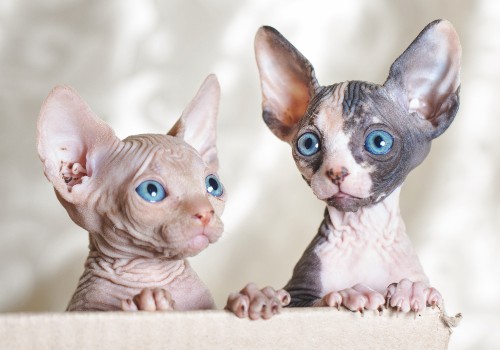
Do you know that hairless cats require special care?
Though they may have little or no hair, their skin still produces oils like furred cats.
Let’s go over their requirements in the below table.
| Care Requirement | Description |
|---|---|
| Weekly Baths | Bathe your hairless cat in warm water with hypoallergenic cat shampoo, rinse thoroughly, and dry them off. |
| Ear Cleaning | Clean your cat’s ears after their bath to remove dirt and ear wax – search for online tutorials to learn the correct procedure. |
| Nail Trimming | Keep their nails trimmed to prevent accidental injuries to their skin. |
| Indoor Environment | As hairless cats are sensitive to the sun’s rays, keep them indoors almost exclusively. |
| Eye Care (if applicable) | If your cat lacks eyelashes, gently wipe its eyes daily to remove any dirt particles. |
| Temperature Regulation | Pay special attention to keeping your hairless cat warm during colder months and cool during hot seasons, as they lack fur to regulate their body temperature naturally. |
How Much Does a Hairless Cat Cost?
Have you ever wondered about the fascinating world of rare cat breeds? These felines are not only difficult to find; they are also challenging to raise. With usually only four kittens in a litter compared to the six domestic shorthairs, these cats require a lot more care than the average household feline.
So, what does it take to own one of these regal cats, and what factors determine their price? The value of such a cat depends on the breed, its rarity, the pedigree, and the overall quality of the cat in question. For instance, while a Sphynx cat is more common than a Minskin, a show-quality Sphynx may cost more than a pet-quality Minskin.
But there’s more to consider than just the price tag. Hairless breeds, such as the Sphynx and Minskin, tend to have some hereditary diseases. These can include hypertrophic cardiomyopathy, polycystic kidney disease, progressive retinal atrophy, or congenital myasthenic syndrome. It is crucial for the breeder to check for these diseases in the kittens through expensive tests.
In conclusion, owning a rare and exotic cat breed can be an exciting and rewarding experience. However, it is essential to be aware of the necessary care, potential health risks, and costs associated with these beautiful felines. So, if you are considering welcoming one of these regal cats into your home, make sure you do thorough research and choose a responsible breeder. Doing so will help ensure you and your extraordinary new pet share a happy, healthy life together.
Breed Average-Price
Are you curious about the costs of different hairless cat breeds?
Let’s take a look at the various hairless cat breeds and their average price range to help you decide which one might be right for you. The following table breaks down the costs for each breed:
| Hairless Cat Breed | Average Price Range |
|---|---|
| Sphynx | $1,800 – $3,000 |
| Peterbald | $1,700 – $3,000 |
| Donskoy | $500 – $2,500 |
| Unkrainian Levkoy | $400 – $800 |
| Bambino | $1,800 – $3,000 |
| Minskin | $1,500 – $5,000 |
| Dwelf | $2,000 – $3,000 |
| Lykoi | $1,500 – $2,500 |
Please note that these prices are rough estimates and can vary depending on the breeder, location, and other factors. Researching and communicating with breeders is essential to ensure you’re getting a healthy and well-cared-for pet. Happy cat hunting.
Buying a Sphynx Kitten (Video)
Related Questions
1. What are some common health issues in hairless cat breeds?
Hairless cat breeds, such as the Sphynx and Minskin, can be prone to certain hereditary diseases. Some common health issues include hypertrophic cardiomyopathy, polycystic kidney disease, progressive retinal atrophy, and congenital myasthenic syndrome. It’s crucial for potential owners to be aware of these risks and to work with a responsible breeder who checks for these diseases in the kittens through necessary tests.
2. Are hairless cats hypoallergenic?
Although hairless cats produce fewer allergens than their furry counterparts, they are not entirely hypoallergenic. Their skin still produces oils, which can carry the allergens that cause allergic reactions in some people. However, they may still be a better option for individuals with mild cat allergies, as they lack the fur that can trap and spread allergens throughout your home.
3. How do I care for my hairless cat’s skin?
Proper skin care is essential for hairless cats. You should bathe your cat weekly using warm water and hypoallergenic cat shampoo. Rinse thoroughly and dry them off after bathing. Additionally, keeping their nails trimmed can prevent accidental injuries to their delicate skin. Be sure also to provide a temperature-regulated environment, as they lack fur to naturally regulate their body temperature.
4. Can hairless cats be outdoor cats?
Hairless cats are best suited as indoor pets, as they are sensitive to the sun’s rays and can easily become sunburned or suffer from temperature-related issues. If you want your hairless cat to experience the outdoors, consider using a harness and leash to take them on supervised walks or provide a secure outdoor enclosure where they can safely explore without sunburn or overheating, or cold exposure.
"In ancient times cats were worshipped as gods; they have not forgotten this."
-- Terry Pratchett

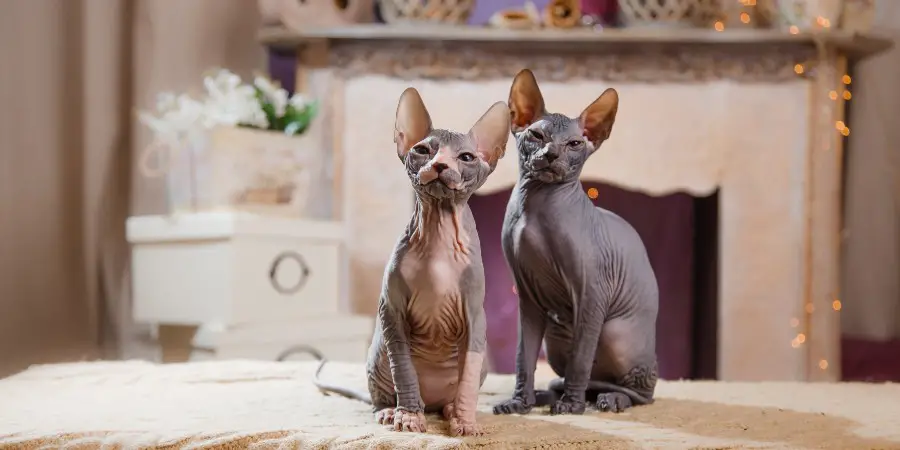
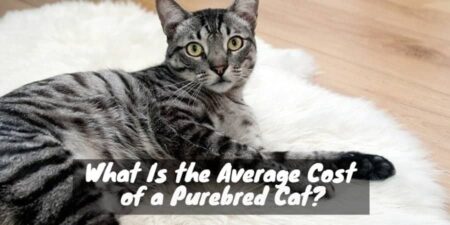



I really want a hairless cat, but I don’t have money. Where can I find a free one?